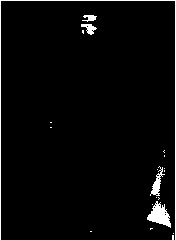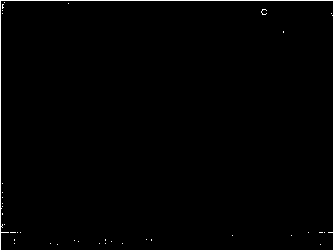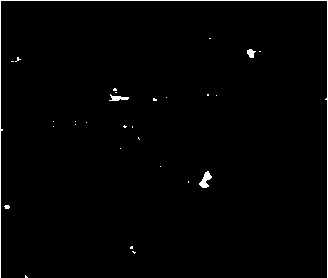Method for rapidly preparing monolayer graphene oxide through one-pot method
A graphene and single-layer technology, applied in the field of nanomaterials, can solve problems such as poor product quality, and achieve the effects of easy operation, less raw material consumption, and short preparation time
- Summary
- Abstract
- Description
- Claims
- Application Information
AI Technical Summary
Problems solved by technology
Method used
Image
Examples
Embodiment 1
[0023] Graphite with a particle size of 0.5 μm and concentrated sulfuric acid was stirred, mixed and infiltrated at room temperature for 5 minutes, potassium persulfate and phosphorus pentoxide were added, and the temperature of the mixture was slowly raised to 30°C and continued to stir for 10 hours. Then the reaction solution was lowered to 20°C, a certain amount of concentrated sulfuric acid was added and potassium permanganate was added slowly, the reaction was carried out at 20°C for 0.5h, and the temperature was raised to 50°C to continue the reaction for 2h. After the reaction is completed, slowly pour the resulting product into iced deionized water for dilution. After stabilization, add hydrogen peroxide and let it stand for a period of time. The precipitate is washed repeatedly with 1mol / L dilute hydrochloric acid and deionized water, and centrifuged to obtain a single-layer oxidation solution. Graphene, which is dispersed into a low-to-high multi-gradient graphene oxi...
Embodiment 2
[0025] Graphite with a particle size of 40 μm and concentrated sulfuric acid was stirred, mixed and infiltrated at room temperature for 0.5 h, potassium persulfate and phosphorus pentoxide were added, the temperature of the mixture was slowly raised to 80° C., and stirring was continued for 2 h. Then the reaction solution was lowered to 28°C, a certain amount of concentrated sulfuric acid was added and potassium permanganate was added slowly, the reaction was carried out at 37°C for 1.5h, and the temperature was raised to 50°C to continue the reaction for 3.5h. After the reaction is completed, slowly pour the resulting product into iced deionized water for dilution. After stabilization, add hydrogen peroxide and let it stand for a period of time. The precipitate is washed repeatedly with 1mol / L dilute hydrochloric acid and deionized water, and centrifuged to obtain a single-layer oxidation solution. Graphene, which is dispersed into a low-to-high multi-gradient graphene oxide s...
Embodiment 3
[0028] Graphite with a particle size of 100 μm and concentrated nitric acid was stirred, mixed and infiltrated at room temperature for 0.5 h, potassium permanganate and potassium phosphate were added, the temperature of the mixture was slowly raised to 50° C., and stirring was continued for 4 h. Then the reaction solution was lowered to 25°C, a certain amount of concentrated nitric acid was added and potassium ferrate was added slowly, the reaction was carried out at 30°C for 2h, and the temperature was raised to 50°C to continue the reaction for 4h. After the reaction is completed, slowly pour the resulting product into iced deionized water for dilution. After stabilization, add hydrogen peroxide and let it stand for a period of time. The precipitate is washed repeatedly with 1mol / L dilute hydrochloric acid and deionized water, and centrifuged to obtain a single-layer oxidation solution. Graphene, which is dispersed into a low-to-high multi-gradient graphene oxide solution wit...
PUM
| Property | Measurement | Unit |
|---|---|---|
| Thickness | aaaaa | aaaaa |
Abstract
Description
Claims
Application Information
 Login to View More
Login to View More - Generate Ideas
- Intellectual Property
- Life Sciences
- Materials
- Tech Scout
- Unparalleled Data Quality
- Higher Quality Content
- 60% Fewer Hallucinations
Browse by: Latest US Patents, China's latest patents, Technical Efficacy Thesaurus, Application Domain, Technology Topic, Popular Technical Reports.
© 2025 PatSnap. All rights reserved.Legal|Privacy policy|Modern Slavery Act Transparency Statement|Sitemap|About US| Contact US: help@patsnap.com



